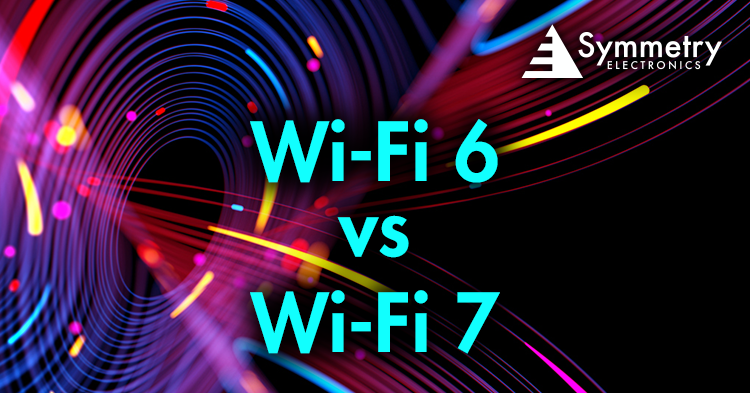Wi-Fi 6 vs Wi-Fi 7

As of 2021, slightly over half of all Wi-Fi product device shipments were equipped with Wi-Fi 6 capabilities. Despite this, discussions about the next generation of wireless technology are not premature. Projections from the Wi-Fi Alliance® suggest that Wi-Fi 6 shipments will exceed 5.2 billion by 2025. Surprisingly, Wi-Fi 7 was officially unveiled on January 8, 2024 with Wi-Fi CERTIFIED 7™, prompting questions about the rationale behind this overlap. Is there space for two concurrent Wi-Fi standards? What sets them apart, and how do they contribute to ongoing advancements in technology?
Understanding Wi-Fi 6
The announcement of Wi-Fi 6, also known as 802.11ax, marked the first major update to Wi-Fi technology in five years. It introduces several key features aimed at improving speed, efficiency, and overall performance.
One notable advancement is the utilization of both the 2.4 GHz and 5 GHz bands simultaneously, allowing for more efficient data transmission and reduced congestion. Additionally, Wi-Fi 6 boasts a significant increase in maximum speed, with theoretical speeds reaching up to 9.6 Gbps. Moreover, the introduction of Wi-Fi 6E further expands the spectrum by unlocking the 6 GHz band, offering even greater bandwidth and reduced interference for compatible devices.
Where Does Wi-Fi 6E Come In?
Wi-Fi 6E represents a significant leap forward in wireless networking technology. With the Federal Communications Commission (FCC) paving the way for the use of the 6 GHz band, Wi-Fi 6E promises enhanced performance and reliability.
By leveraging the additional spectrum, Wi-Fi 6E can deliver lower latency, wider channel availability, and improved connectivity, particularly in dense urban environments. Moreover, the introduction of Wi-Fi 6E has implications for mesh Wi-Fi systems, allowing for seamless coverage and faster speeds across a broader area.
Introducing Wi-Fi 7
Wi-Fi 7, also known as 802.11be, builds upon the foundation laid by Wi-Fi 6 and introduces several groundbreaking features. One of the most notable advancements is its utilization of not only the 2.4 GHz and 5 GHz bands but also the newly unlocked 6 GHz band. This tri-band approach enables Wi-Fi 7 to achieve Extremely High Throughput (EHT), offering data rates more than four times faster than Wi-Fi 6.
With such remarkable speeds, Wi-Fi 7 holds the promise of revolutionizing the way we connect and communicate, paving the way for future networking capabilities and applications.
Pros and Cons
When comparing Wi-Fi 6 and Wi-Fi 7, it's essential to consider their respective strengths and limitations. Wi-Fi 6E's broader coverage and enhanced performance make it well-suited for environments with high-density deployments, such as stadiums or concert venues. However, Wi-Fi 7's shorter range may be a limiting factor in certain scenarios, requiring closer proximity to access points for optimal performance.
Additionally, both standards face challenges regarding interference, particularly in congested urban areas where multiple devices compete for limited spectrum. Furthermore, the cost implications of upgrading routers and devices to support these new standards must be taken into account.
Find Both Wi-Fi 6 and Wi-Fi 7 Solutions at Symmetry Electronics
As the world becomes increasingly reliant on wireless connectivity, staying informed about the latest advancements in Wi-Fi technology is crucial. Wi-Fi 6 and Wi-Fi 7 represent significant milestones in the evolution of wireless networking, offering improved speed, efficiency, and reliability.
Symmetry Electronics has established partnerships with industry powerhouses that offer the latest Wi-Fi 7 solutions like the IRIS-10 from u-blox or the highly anticipated SX-PCEBE from Silex. Wi-Fi 6 solutions are also readily available including the SiWx917 from Silicon Labs and the Sona™ IF573 from Ezurio.
Designed for ultra-low power IoT wireless devices, SiLabs’ SiWx917 SoC combines Wi-Fi 6, Bluetooth® LE 5.4, Matter, and IP networking for secure cloud connectivity, making it ideal for battery-operated devices requiring long battery life. With its integrated micro-controller application subsystem, security features, and power management, all in a compact 7x7 mm QFN package, the SiWx917 SoC provides a fully integrated solution for a variety of embedded wireless IoT applications.
The Sona IF573 series of wireless modules from Ezurio is optimized for low-power mobile devices. Featuring Wi-Fi 6E and Bluetooth® 5.4 capabilities in a single package, it supports simple implementation and platform-specific customization. With tri-band IEEE 802.11ax support and a dedicated Bluetooth port, it ensures high-performance Wi-Fi and Bluetooth coexistence while maximizing battery life.






